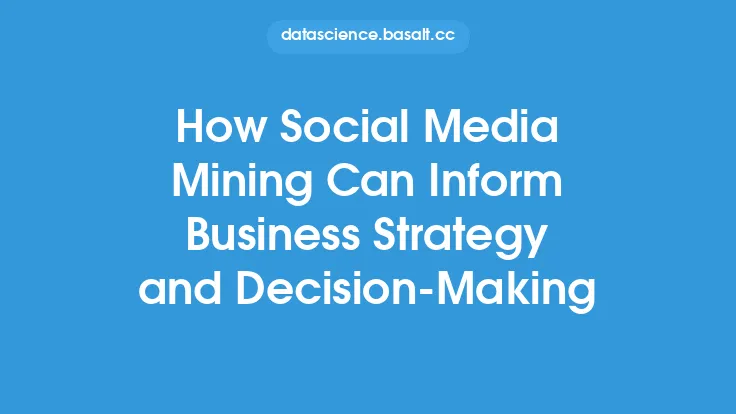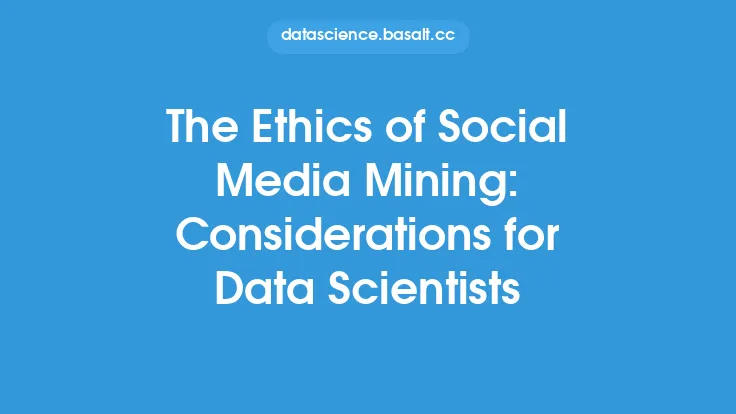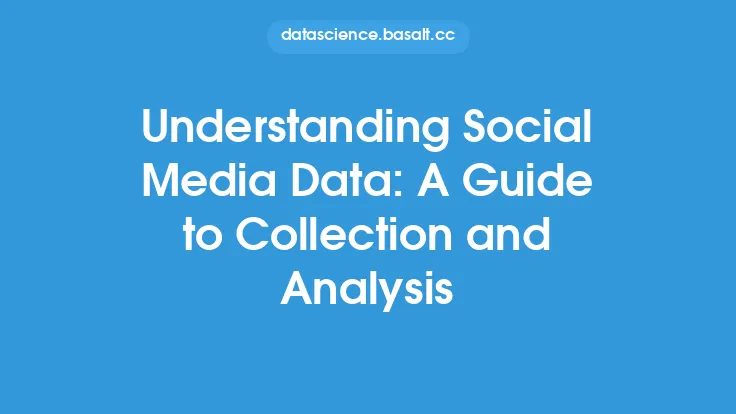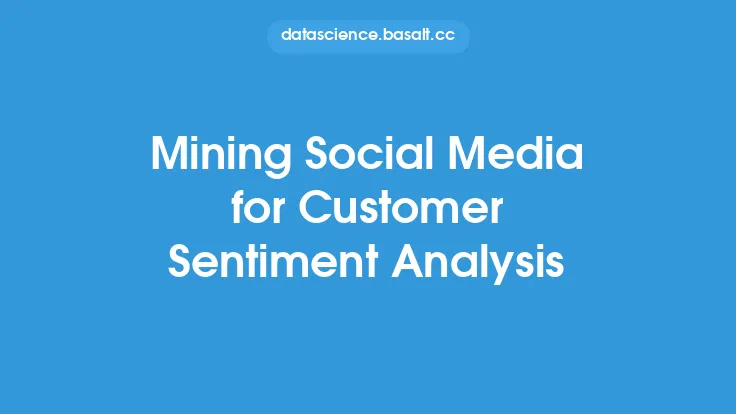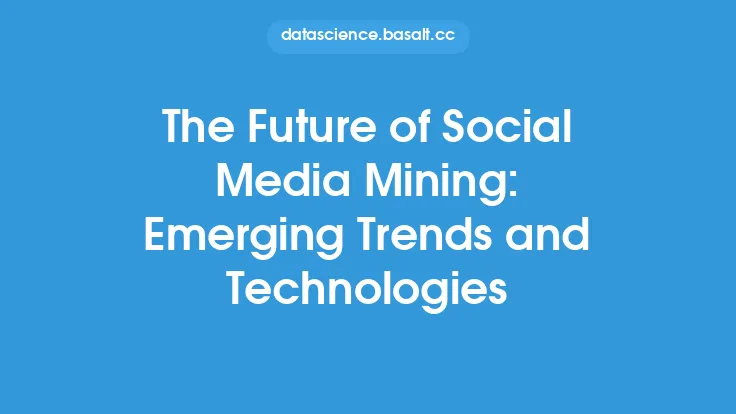Social media has become an essential tool for businesses to gather competitive intelligence, allowing them to stay ahead of their competitors and make informed decisions. Social media mining is the process of extracting valuable insights and patterns from social media data, which can be used to gain a competitive advantage. In this article, we will explore the concept of social media mining for competitive intelligence, its benefits, and the steps involved in the process.
Introduction to Social Media Mining
Social media mining involves the use of various techniques, such as natural language processing, machine learning, and data mining, to extract insights from social media data. This data can include tweets, Facebook posts, Instagram comments, and other online conversations. The goal of social media mining is to identify patterns, trends, and relationships in the data that can provide valuable insights into customer behavior, preferences, and opinions. By analyzing social media data, businesses can gain a better understanding of their target audience, identify areas for improvement, and develop effective marketing strategies.
Benefits of Social Media Mining for Competitive Intelligence
Social media mining offers several benefits for competitive intelligence, including:
- Real-time insights: Social media data is available in real-time, allowing businesses to respond quickly to changes in the market or customer behavior.
- Competitor analysis: Social media mining can be used to analyze competitors' online presence, identifying their strengths and weaknesses, and areas for improvement.
- Customer sentiment analysis: Social media mining can be used to analyze customer opinions and sentiment, providing valuable insights into customer preferences and pain points.
- Market trend analysis: Social media mining can be used to identify emerging trends and patterns in the market, allowing businesses to stay ahead of the competition.
- Influencer identification: Social media mining can be used to identify influencers and thought leaders in the industry, providing opportunities for partnerships and collaborations.
Steps Involved in Social Media Mining
The process of social media mining involves several steps, including:
- Data collection: This involves collecting social media data from various sources, such as Twitter, Facebook, and Instagram.
- Data preprocessing: This involves cleaning and preprocessing the data to remove noise and irrelevant information.
- Data analysis: This involves using various techniques, such as natural language processing and machine learning, to extract insights from the data.
- Pattern identification: This involves identifying patterns and trends in the data, such as changes in customer sentiment or emerging market trends.
- Insight generation: This involves generating insights and recommendations based on the patterns and trends identified in the data.
- Visualization: This involves presenting the insights and recommendations in a clear and concise manner, using visualization tools such as charts and graphs.
Tools and Techniques Used in Social Media Mining
Several tools and techniques are used in social media mining, including:
- Natural language processing: This involves using techniques such as text analysis and sentiment analysis to extract insights from social media data.
- Machine learning: This involves using algorithms such as supervised and unsupervised learning to identify patterns and trends in the data.
- Data mining: This involves using techniques such as clustering and decision trees to extract insights from the data.
- Social media analytics tools: These are specialized tools, such as Hootsuite and Sprout Social, that provide insights and analytics on social media data.
- Programming languages: These include languages such as Python and R, which are used to develop custom social media mining tools and algorithms.
Challenges and Limitations of Social Media Mining
While social media mining offers several benefits, there are also several challenges and limitations to consider, including:
- Data quality: Social media data can be noisy and irrelevant, requiring careful preprocessing and cleaning.
- Data volume: Social media data can be vast and overwhelming, requiring specialized tools and techniques to analyze.
- Privacy concerns: Social media mining raises several privacy concerns, including the collection and use of personal data.
- Bias and accuracy: Social media mining algorithms can be biased and inaccurate, requiring careful validation and testing.
Best Practices for Social Media Mining
To get the most out of social media mining, several best practices should be followed, including:
- Define clear goals and objectives: This involves clearly defining what you want to achieve through social media mining, such as improving customer sentiment or identifying emerging market trends.
- Use specialized tools and techniques: This involves using specialized tools and techniques, such as natural language processing and machine learning, to extract insights from social media data.
- Ensure data quality: This involves carefully preprocessing and cleaning social media data to remove noise and irrelevant information.
- Validate and test algorithms: This involves carefully validating and testing social media mining algorithms to ensure accuracy and bias.
- Consider privacy concerns: This involves carefully considering privacy concerns, including the collection and use of personal data.
Conclusion
Social media mining is a powerful tool for competitive intelligence, allowing businesses to extract valuable insights and patterns from social media data. By following best practices and using specialized tools and techniques, businesses can gain a competitive advantage and stay ahead of the competition. However, social media mining also raises several challenges and limitations, including data quality, privacy concerns, and bias and accuracy. By carefully considering these challenges and limitations, businesses can ensure that they get the most out of social media mining and achieve their goals and objectives.
